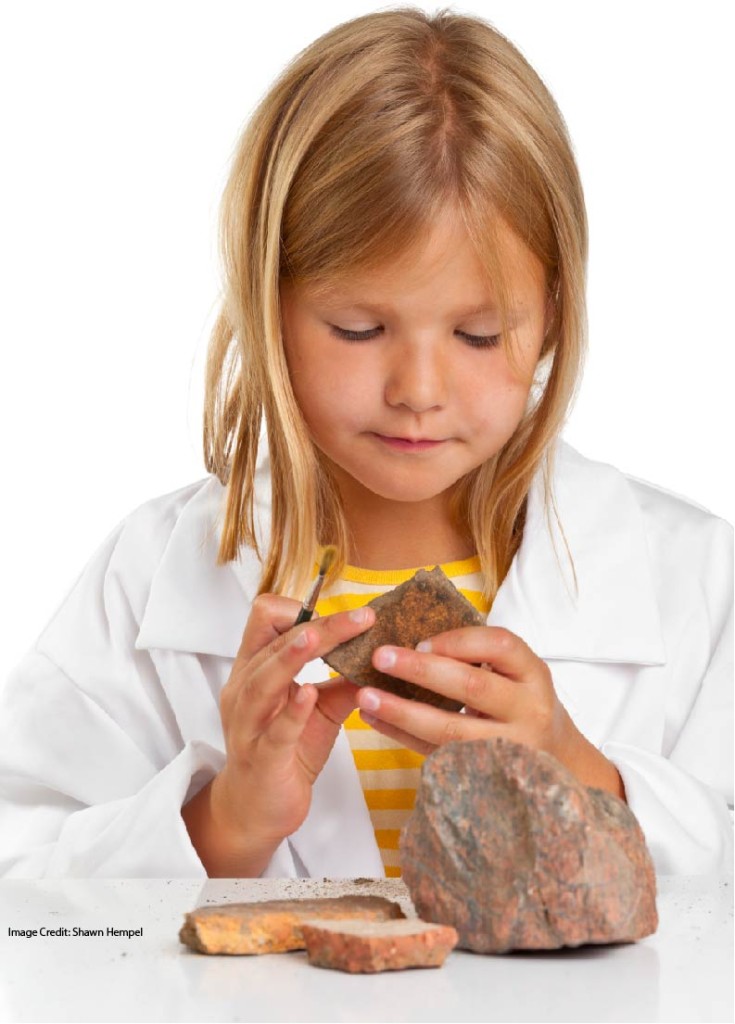As schools focus more on STEM disciplines, teachers strive to help our students master complex STEM concepts.
After all, it’s hard enough to say “magnetic anisotrophy,” much less understand what it is.
Researchers Dane DeSutter and Mike Stieff have several suggestions for teachers. Specifically, they argue that spatial thinking–essential to many STEM concepts–can be enhanced by appropriate gestures.
3 Guidelines for STEM Gestures
DeSutter and Stieff’s article begins with an extensive theoretical review. They focus on embodied cognition: the idea that our physical bodies and actions ground our thinking.
Their conclusion? The right kind of gesture helps students understand physical space better. And students who can think well about space do better in STEM classes.
They understand “area” and “volume” better. They understand “covalent bonds” better. They even understand “torque” better–and torque can be a real head-scratcher.
To guide STEM teachers interested in gestures, these authors offer three suggestions:
1. Explain the relationship between the gesture and the concept.
Several studies show that students shouldn’t just DO the gestures. They have to understand WHY they’re doing them. In other words, they have to see how the gesture and the new idea connect.
In one study quoted here, students learning about ratio improved only when they got feedback on the meaning and correctness of their gestures.
2. Effective gestures simulate physical actions that students have to imagine.
This technique, for example, can help students learn about geological faults, or about the movements of planets in a solar system. These gestures help, in part, because we can easily use our hands and arms to replicate the movement of faults and planets.
Gestures that aren’t meaningfully connected to the physical action being learned are less likely to help.
3. Technology is your friend.
Lots of cool gizmos can be especially helpful in making gestures clear and meaningful.
For example, DeSutter and Stieff wanted to help college students understand the structure of molecules more effectively. They created a computer program that produced a 3D image of a molecule.
Here’s the cool technology part. When students leaned from side to side, the computer’s camera could track their movement and rotate the molecule appropriately. It seemed as if a gigantic molecule were on the table in front of them, and they could look at it from multiple angles just by leaning.
Later, when the students tried to draw these molecules, DeSutter and Stieff noted that they leaned from side to side while they thought about assembling its different parts.
In other words: the gesture (leaning) helped them learn more about molecules.
Where to begin with gestures?
If you’re intrigued by the idea of using gestures to help with STEM learning, know that the field is still quite young.
That’s good, because it’s an exciting time to explore.
That’s less good, because we don’t have lots of SPECIFIC suggestions yet. Researchers are testing various ideas, but we don’t yet have a library of gestures for teachers to use.
You might start this way:
For some background, you could read How the Body Knows its Mind by Sian Beilock. She is a marvelous researcher–and, by the way, currently the President of Barnard College.
Beilock’s book doesn’t have lots of practical suggestions, but it does explain the reasons that researchers are so upbeat about the possibilities. It’s a fun and lively read.
Next, you could poke around in the DeSutter and Stieff article itself.
It’s true: their theoretical introduction could be daunting. However, when you get to the guidelines (starting page 12), you’ll find several specific examples that might point you the right way.
If you’re a math teacher, you’ll focus on those studies. If you teach adult learners, you’ll focus on those. Once you’ve done enough rummaging, you might have gathered enough suggestions to know how you’d like to start.
Depending on your enthusiasm for research, you can look up the studies that apply to your work. Each of them will refer to other studies. Fairly quickly, you can read up on–say–using hand gestures to explain fractions.
Given how new this field is, you could start leading the way with your own suggestions and innovations.
A Final Thought
The world of Learning and the Brain promises to bring psychologists, neuroscientists, and teachers together so we can learn from each other.
This particular field–the use of gestures to teach STEM–seems an excellent opportunity to do so.
You con combine your teacherly wisdom with the guidelines above to try out new gesture strategies in class. As you do so, you might quickly develop a useful body of experience.
You can then share your ideas with an interested psychologist. And the both of you could run ideas by a neuroscientist who studies movement and cognition.
If this collaboration happens just right, our STEM students will learn more.




